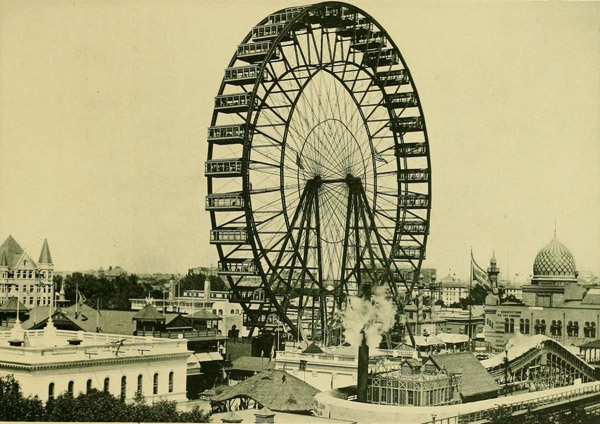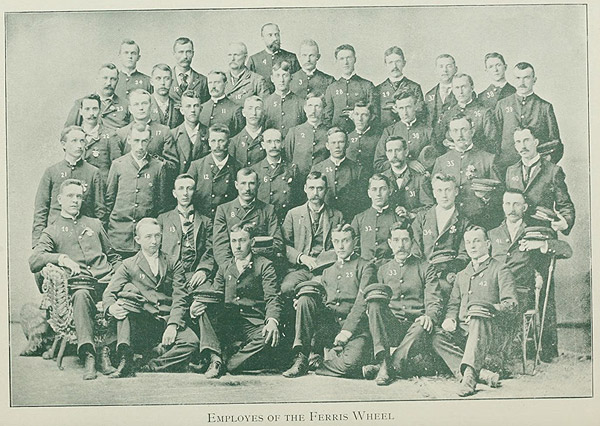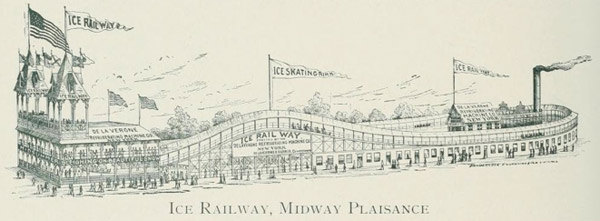Today Google has a cute Google doodle of a Ferris wheel; I figured it was because Ferris wheels are romantic, but it's also the birthday of George Ferris, born in Galesburg in 1859 (and namesake of Galesburg founder George Washington Gale), though he grew up in Nevada.

Ferris's wheel, dreamed up during an engineer's lunch at a Chicago steakhouse and featuring the then-largest single piece of steel in the world (45 feet long, 70 tons, and costing $35,000, or $880,000 today), was one of the hits of the Columbian Exposition. The whole thing cost $380,000, or about $9.5 million in 2012 dollars, but 1.5 million people rode it over the course of the exposition (it could carry 1,400 people at a time), bringing in $750,000 at fifty cents a ride.
It was not, however, the most profitable attraction at the World's Fair. Of the "Amusements and Midway Shows," it brought in $128k for the fair (at 25-33 percent of gross receipts); the "Streets in Cairo" ("donkeys, dancing-girls, temples, and trinkets) brought in $159k. (The top earner was a caterer, which brought in twice what Streets in Cairo did; the smallest was a fish-line salesman, whose share to the Expo was 94 cents.)

Like so much of the Columbian Exposition, the Ferris wheel was meant not only to be a ride, but to demonstrate the technological mastery of American industry—not just the steel axle (forged at the Bethlehem Iron Company in Pennsylvania), or the engines (two 110-ton, 2,000 horsepower machines built in Youngstown, Ohio), or the ironwork (made in Detroit) but the electricity used to light it: 2,500 Edison incandescent lamps.
But if I had my way, the Expo legacy on Navy Pier would not be Ferris's wheel. It would be the De La Vergne Ice Railway.

"It consists of a long elliptical plane like a toboggan slide," the Chicago Inter Ocean reported, "which, in fact, it is, on which a heavy coating of snow, is made and kept by two De La Vergne Ice Refrigerating Machines, one of 65 tons, the other 50 tons. It is wonderful to see pure snow crystals glistening in the hot summer sun and torrid temperature of June, and shows as nothing else could do the vast advance in ice refrigeration…."
It was basically an 850-foot bobsled run—frozen by ammonia-filled pipes running the length of the railway—the bobsleds, "containing four leather-cushioned seats and accomodating eight persons, glide with the velocity of a toboggan and the ease of a coaster to the merry jingle of silver bells," according to the Chicago Times. Despite the fact that it killed one rider and injured five others on a test run, it went on to be a success, earning the fair $25,000 at a mere ten cents a ride.
Images: archive.org


